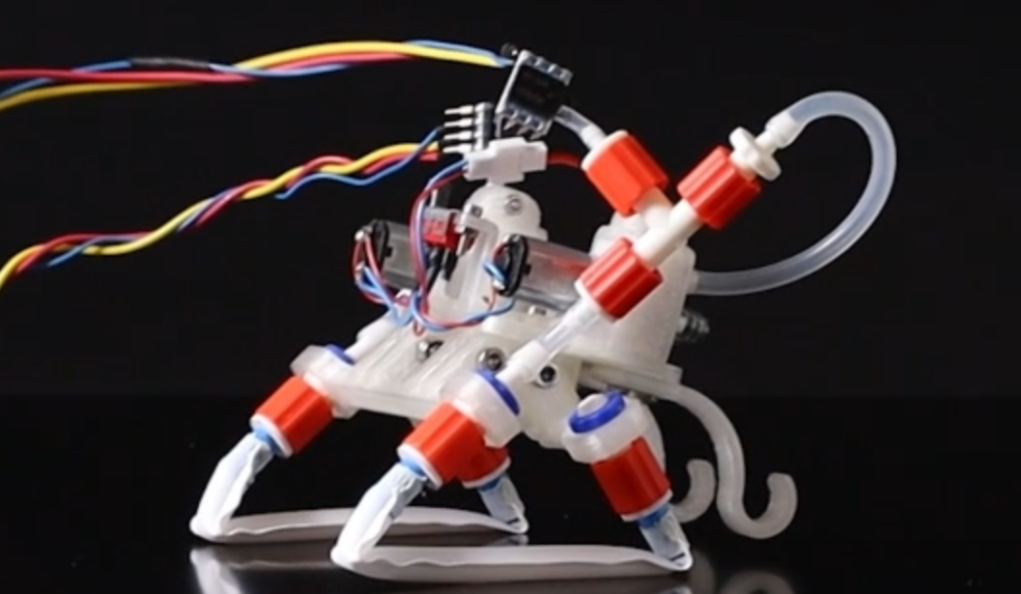A Revolutionary Leap in Robotics: Autonomous Air-Driven Movement
In a groundbreaking development in robotics, a team of Dutch scientists has created a novel robotic system that operates without a central control unit. This new robot uses airflow to move, navigate obstacles, and even swim, marking a significant departure from the conventional robots that rely on complex control systems and artificial intelligence.
The Concept Behind Airflow-Driven Robotics
At the helm of this innovative project is Alberto Comoretto, a roboticist at the FOM Institute for Molecular and Atomic Physics (AMOLF) in Amsterdam. The inspiration for this air-driven robot emerged from an unexpected experiment involving a tube that began to oscillate wildly when airflow was interrupted. Comoretto’s observations revealed that the interaction between air pressure within the tube and the structure of the tube itself resulted in a self-sustaining, periodic, and asymmetric motion, igniting excitement among the research team.
"We were super excited because we saw this self-sustaining, periodic, asymmetric motion," stated Comoretto, commenting on the discovery that led to the development of this new robotic system. The oscillating tube demonstrated an autonomous movement pattern similar to that of living organisms, from the micro level of single-celled life forms to human locomotion.
The Mechanics of Movement
The mechanics underpinning this robot are relatively straightforward yet profoundly innovative. The airflow creates kinks within the robotic structure, which travel along its length due to varying pressure conditions. When one kink dissipates, another emerges, allowing the robotic entity to engage in continuous movement. This design eliminates the need for a centralized motor or brain, presenting a novel approach to overcoming environmental obstacles.
The underlying principle mirrors concepts utilized in popular inflatable toys, such as the "Fly Guys" that captivated audiences during the 1996 Olympic Games. By leveraging nature’s own mechanisms for movement, the AMOLF robotics team has tapped into a fundamental aspect of biological motion.
Potential Applications
This new type of robot could hold significant promise across various sectors. From search-and-rescue missions in potentially hazardous environments to exploring underwater ecosystems, the adaptive nature of this air-driven robot allows it to traverse diverse terrains efficiently. Additionally, its simplicity in design suggests potential advantages in terms of cost-effectiveness and ease of deployment compared to traditional robots.
Broader Implications for Robotics
The implications of this technology extend beyond just mobility. By demonstrating the feasibility of brainless robots, researchers may pave the way for a new era of autonomous machines that can make decisions based on external stimuli without the computational delays associated with traditional control systems. This could lead to robots that are more responsive to their environments and capable of real-time adaptations.
Controversies and Skepticism
Although this breakthrough highlights an exciting frontier in robotics, it does not come without skepticism. Critics argue that while the robot exhibits remarkable movement capabilities, it lacks the sensory feedback mechanisms present in more complex robots. Traditional robots, equipped with sensors and artificial intelligence, can learn from their environment, mitigate risks, and adapt to unpredictable conditions more effectively.
Conclusion: Significance of the Discovery
As the field of robotics continues to evolve, this innovative air-driven robot from AMOLF symbolizes a radical shift in how machines can be designed and operated. Its reliance on airflow rather than advanced electronics not only showcases the potential for creating simpler, more efficient robotic systems but also blurs the line between man-made machines and living organisms.
In a world increasingly populated by autonomous systems, advancements like these represent a deeper understanding of motion and a step toward robotics that mirror the efficiency and adaptability found in nature. As further research unfolds, the potential applications and implications of this technology could redefine our relationship with machines, leading to a future where robots navigate the complexities of their environments as effortlessly as nature itself.









